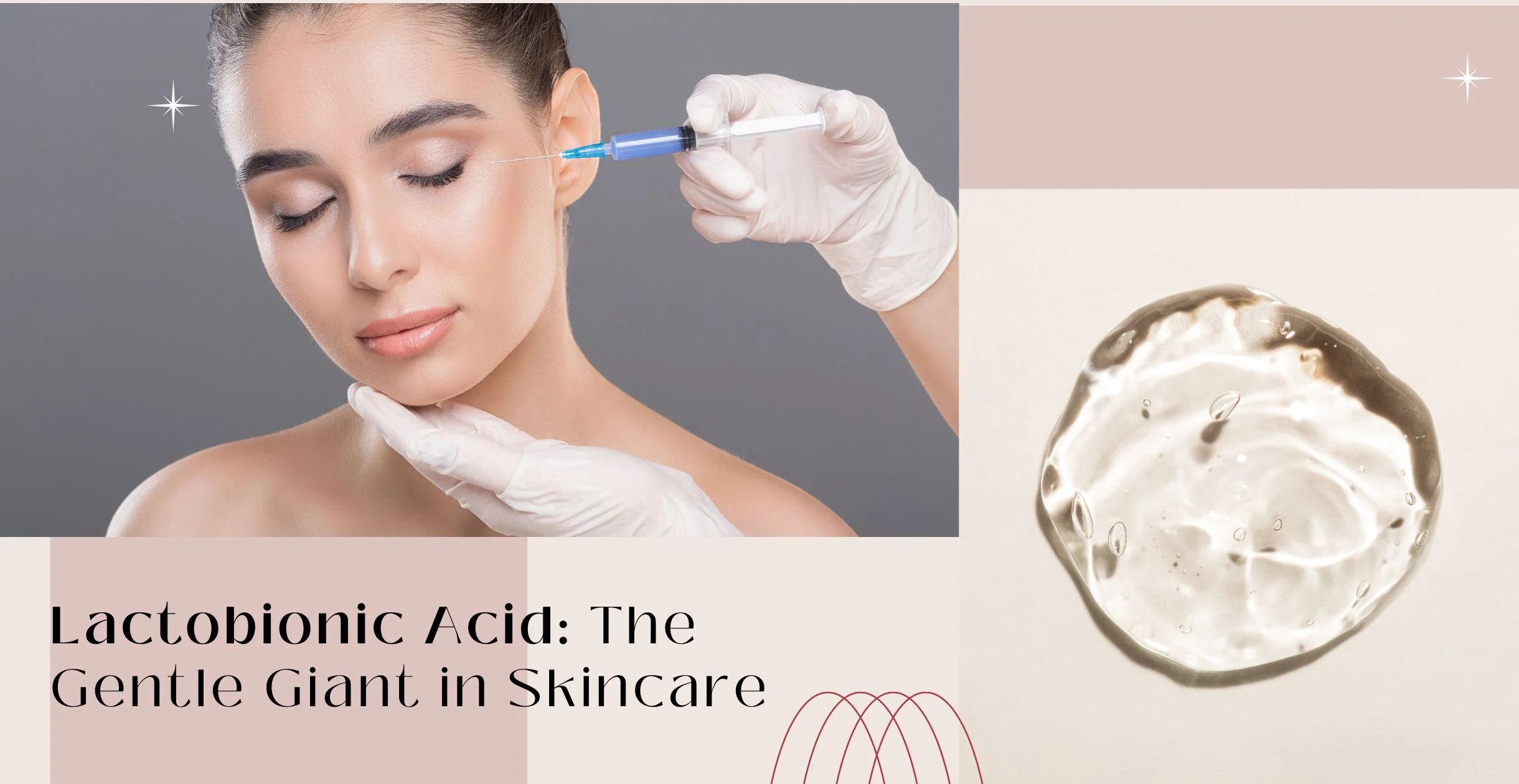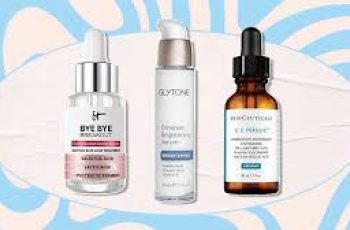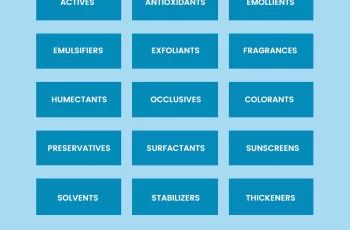What is the role of lactobionic acid in skin care? What are its benefits?
When it comes to skin care acids, these powerful ingredients can do it all. Whether it’s fighting signs of aging, hyperpigmentation or brightening dull complexions, the powerful AHA and BHA families tackle all of these issues at once. However, there are a number of acids that are slowly but surely making their way into our skin care routines: polyhydroxy acids, also known as PHAs. I’ve discussed these acids before in a dedicated blog post, but today I want to focus on one in particular.
If you want to learn more about lactobionic acid and its benefits for your skin, stay tuned.
What is Lactobionic Acid?
Lactobionic acid is the latest skin-transforming ingredient. Also known as LA, it is naturally produced in the body as a result of the oxidation of lactose. As a member of the PHA family, it has gained recognition from dermatologists and beauty experts in recent years for its impressive antioxidant properties. This makes it a highly effective ingredient for skin care products, as it can significantly protect the skin from free radical damage caused by things like pollution, UV radiation and other environmental aggressors. When the skin is exposed to these influences without the help of antioxidant-rich compounds, a host of skin issues can occur, from fine lines to congestion and uneven skin to hyperpigmentation.
What does lactobionic acid do for the skin?
Due to its high antioxidant action, lactobionic acid keeps the skin’s natural protective barrier fully functional and fights off all free radicals. But that’s not the only benefit this clever PHA offers the skin. It’s an acid that removes the buildup of dead skin cells, debris, and other impurities that often cause the skin to look dull. By gently exfoliating, lactobionic acid restores the skin’s balance and significantly improves overall skin tone and radiance. You’ll also find that due to its larger molecular size, LA is unable to penetrate deep into the skin and cause skin irritation.
Skincare Benefits of Lactobionic Acid
Lactobionic acid belongs to the PHA family and is one of the gentlest acids used in skincare
Lactobionic acid is suitable for all skin types, but is particularly suitable for dry and sensitive skin
Lactobionic acid has antioxidant properties that protect the skin from free radical damage
Lactobionic acid can help the skin stay moisturized
Lactobionic acid gently removes the buildup of dead skin cells that can cause dull, lackluster skin
Lactobionic acid improves dark spots and hyperpigmentation, making them less noticeable
Lactobionic acid has anti-aging benefits and reduces fine lines and wrinkles
Lactobionic acid, like any chemical peel, has been used in a variety of skincare products. This will help you incorporate this ingredient into your daily routine in the most convenient way possible and use it in a way that best suits your lifestyle, budget, and daily skincare routine. While lactobionic acid is a very gentle facial acid, it is recommended that you perform a patch test and consult a dermatologist to ensure that it is the right ingredient for you.
What is the difference between lactobionic acid and other skincare acids?
The main difference between lactobionic acid and other skincare acids is that it is a PHA, meaning that its molecular size (as mentioned before) is very large and cannot penetrate as aggressively as other acids, such as B. glycolic acid or salicylic acid. LA exfoliates the skin and eliminates skin issues and impurities without the side effects (irritation, redness and dryness) common with stronger AHAs and BHAs. Since lactobionic acid works primarily on the outer layer of the skin, its antioxidant, exfoliating and moisturizing properties can help keep the protective barrier functioning and provide the right amount of important oils and water to combat environmental damage and other skin stressors.
Which skin types can benefit from using lactobionic acid?
Many skin types can benefit from incorporating LA into their daily regimen, however, those with sensitive and very dry skin will benefit the most as they will find that with this acid, they can achieve the overall glow they would have achieved with chemical peels and gain something they were unable to do in the past as other acids were too aggressive for the face. You now know that lactobionic acid is one of the gentlest acids on the market and is therefore safe enough to use on all skin types.
If you decide to use a serum rich in lactobionic acid and you are sure it is safe to use, you can start your skin care routine by applying a thin layer of the serum to a thoroughly cleansed face. If you use it during the day, don’t forget to protect your skin with SPF 30 or higher, as the exfoliating properties of the acid may make your skin more sensitive to UV radiation.
How often can you use lactobionic acid in your skin care routine?
Generally speaking, it is best to use the acid once a day in your evening routine, about 2 to 3 times a week, while monitoring your skin for signs of irritation. Once your skin is happy and tolerance has been established, you can increase the frequency of use.
Another factor to consider is the type of products you use that contain LA. For example, a treatment product such as a mask can be used once or twice a week. This is best if you find that you have more problem skin and can combat breakouts with more frequent but gentle exfoliation. For dry skin, using a serum at night can help exfoliate and lock in moisture. You will catch up on your beauty sleep overtime, leaving your complexion refreshed and hydrated in the morning.
Here are a few key points about lactobionic acid and its skin care benefits. Although this PHA acid isn’t as popular as its more potent cousins, it’s the secret to hydrated, glowing, and happy skin, and we’ll definitely be adding it to our skin care routine!
DQH Knowledge drop: In your 20s, your skin cell turnover decreases. (Cell turnover is a key component in keeping your skin youthful.) You know what else slows down? Your collagen production. Starting in your 20s, collagen decreases by about 1 percent per year. Should you want to prevent fine lines and wrinkles, start by eliminating behaviors that contribute to premature aging. “If it’s bad for you, it’s bad for your skin,” says dermatologist Michel Somenek.
“Cigarette smoking reduces blood flow to the skin and causes premature wrinkling and a dull skin texture. Making the repeated pursed motion to inhale can also cause smoker’s lines. Alcohol and recreational drugs are toxins for the skin that damage its cellular structure and DNA,” Somenek tells us. “The faster you eliminate vices while you are young, the better chance your skin and body have to recuperate.” Also, adopting an anti-aging routine in your 20s is key. After all, the best offense is a good defense. We spoke to Somenek and experts Joshua Ross and Audrey Kunin to find out more.
Keep reading for the best anti-aging products for your 20s, according to skincare professionals.
Sunscreen
“We all know that the sun is the number one cause of skin aging and starting the prevention in your 20s is very important,” Ross says. “The majority of your sun damage won’t start to appear until you’re in your 30s, so don’t wait until you see it surface or you’ll be behind the curve. Stay ahead of it with a good-quality zinc-based sunscreen worn daily.”
Farmacy Green Defense Daily Mineral Sunscreen
An invisible sunscreen with SPF 30, plus botanical extracts meant to protect skin with tons of antioxidants. Bonus: It’s clean and fine to use under makeup.
Bareminerals Complexion Rescue™ Tinted Moisturizer Broad Spectrum SPF 30
Although we recommend you use your SPF and moisturizer separately, we also understand moments when you don’t have time or energy for that extra step. For those times, this bareMinerals moisturizer is a great thing to have on hand.
Vitamin C Serum
“A great introduction to anti-aging is to start with a vitamin C serum in your morning skincare routine,” Ross says. “It’s a powerful antioxidant that will neutralize free radicals and brighten the skin.” He adds that it’s a great way to counteract the effects of the sun’s harmful rays, which, as previously mentioned, are among the biggest causes of premature aging.
Drunk Elephant C-Firma™ Vitamin C Day Serum
The Drunk Elephant C-Firma is a lightweight serum that promises to give skin a glow by combining the brightening powers of vitamin C with ferulic acid, l-ascorbic acid, and vitamin E. The included sodium hyaluronate is meant to replace hydration loss, so you shouldn’t have to deal with any irritation.
Sunday Riley C.E.O. Rapid Flash Brightening Serum
This potent serum is jam-packed with vitamin C (15 percent, to be exact), which means it’s a potential superstar at both brightening skin and dousing it in antioxidants.
Peptides
Using peptides on your skin has many benefits, says Somenek. “The skin barrier is what defends the body against pollution, UV rays, bacteria, and toxins. It can be damaged by several everyday factors. Using topical peptides aids in building a stronger barrier,” he says. “Peptides comprise elastic fibers, which are a type of protein. These fibers help to make skin appear taut and firm. Peptides can also help repair damaged skin, relieve inflammation, and even out skin tone. Some peptides can kill acne-causing bacteria that is common in 20-somethings.”
Kunin agrees, saying, “Peptides are an excellent entry point for supporting collagen.” She recommends looking for face and eye treatments that contain these collagen-boosting powerhouses.
Charlotte Tilbury Magic Eye Rescue Cream
This Charlotte Tilbury super-emollient eye cream has a base of coconut oil and shea butter (read: it’s incredibly hydrating). Botanicals plus peptides are meant to help reduce dark circles and boost collagen, respectively.
This creamy moisturizer serves up potent collagen-boosting peptides and pycnogenol, and antioxidant-rich vitamin C. “Instead of sitting on top of the skin, peptides penetrate the outer layer so they go deep. The ‘signals’ they send tell the cells to produce elastin and collagen, which are needed for youthful-looking skin,” explains Somenek.
At-Home Peel Pads
Remember that skin cell turnover fiasco we talked about earlier? One way to help support it is by exfoliating. “Exfoliation is important to help keep skin fresh and luminous,” Kunin says. She recommends using at-home peel pads as an easy and effective way to exfoliate.
“The goal in your 20s is to fight the slowing pace of cell turnover. It is wise to use products that gently exfoliate, yet still remove oil and other impurities. Products that have Alpha Hydroxy Acids (AHA) or Beta Hydroxy Acids (BHA) are a good choice.”
According to Somenek, you should only exfoliate two to three times a week. “People of all ages are guilty of over-exfoliating and that can be too much of a good thing,” he says.
Dermadoctor Kakadu C Intensive Vitamin C Peel Pad
A few swipes of this Derma Doctor powerful peel pad promise to leave your skin glowing and smooth, thanks to the seven (yes, seven) types of chemical exfoliants, including AHA and BHA. It also contains vitamin C via Kakadu plum extract for added brightening and antioxidant protection.
KEY INGREDIENTS Kakadu plum extract is sourced from the Kakadu plum, a fruit grown in northern Australia. It contains vitamin C, which restores the skin’s natural barrier, increases collagen production, and soothes irritation.
Dr. Dennis Gross Skincare Alpha Beta® Universal Daily Peel Pads
These are the gold standard of peel pads, with a cult following and over 900 five-star reviews on Sephora. They’re easy to use and contain a blend of anti-aging exfoliating acids.
Emollient Night Cream
“In your 20s, you need to start upping the hydration in your skincare routine. You may have been cautious of over-moisturizing because of acne in your teens, but as you enter your 20s, your skin transitions and becomes drier,” Ross says. “I recommend an emollient night cream added into your evening skincare regimen.”
“Twenty-somethings need to make sure that they are not using creams that will clog their pores and cause excess oil production,” says Somenek. Opt for non-comedogenic products.
Cerave Skin Renewing Night Cream
One great choice is the CeraVe Skin Renewing Night Cream, which is a non-comedogenic night cream that leaves skin soft and glowy. It combines the moisturizing powers of ceramides and hyaluronic acid.
RoC Retinol Correxion Max Hydration Creme
“The best night cream ingredients contain retinol, benzoyl peroxide, and/or salicylic acid or hyaluronic acid. The goal is to moisturize, yet remove excess oil,” says Somenek. This Roc Retinol Correxion cream fits the bill as it contains both hyaluronic acid and retinol so it promises to moisturize while also being non-comedogenic.



